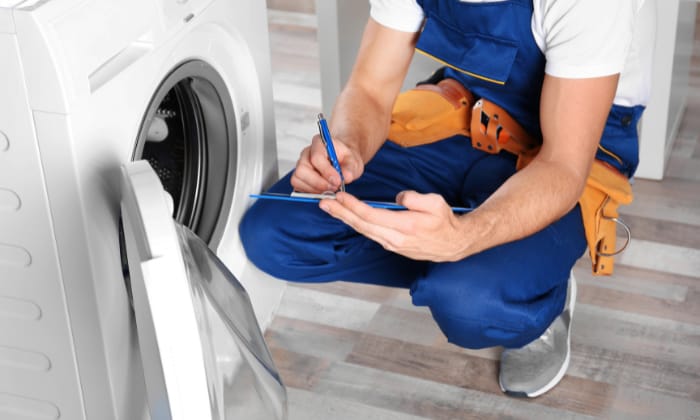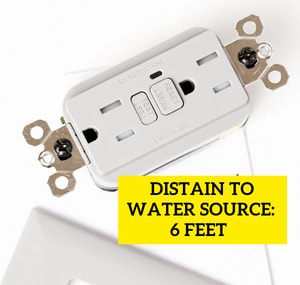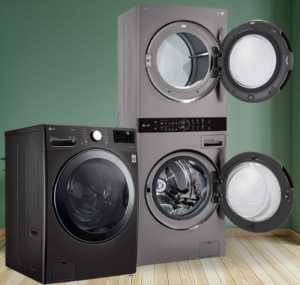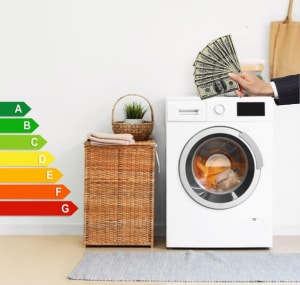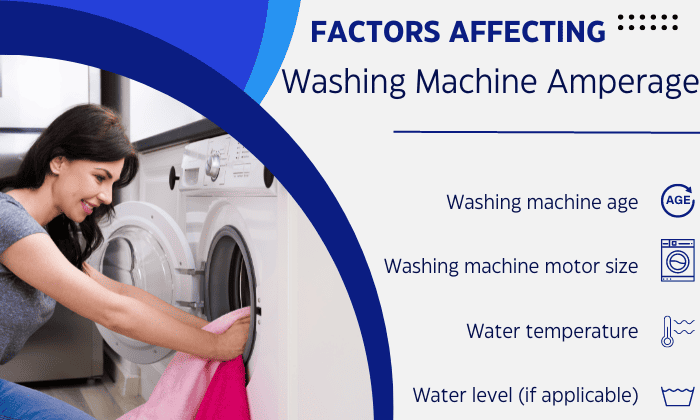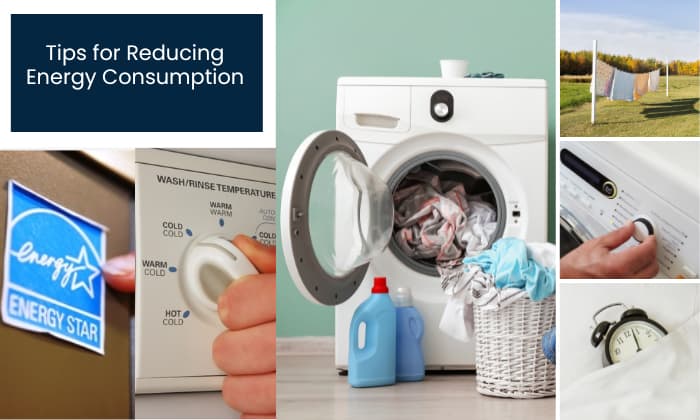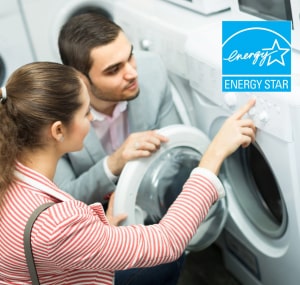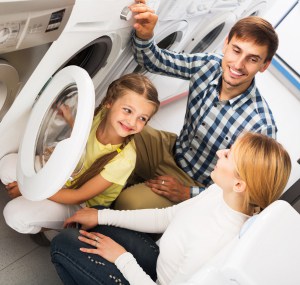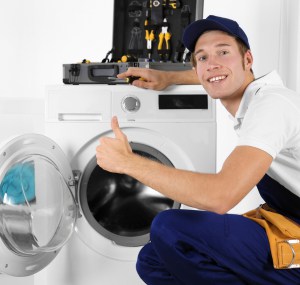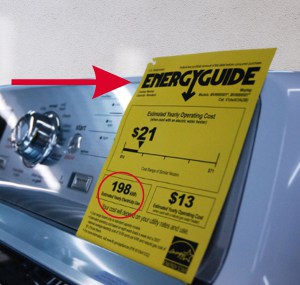Washing machines are one of the most convenient appliances to use in our households. They are efficient and powerful tools that make laundry work easier. To help them perform at their best, we need to know their amp draw and plan their circuits.
How many amps does a washing machine draw? Generally, washing machines draw 10 amps up to 20 amps depending on the model. But washer-dryer sets with standalone electric dryers may pull up to 30 amps.
Table of Contents
Average Amperage and Wattage of Washing Machine
Washing machines can pull 10 amps up to 20 amps. Some models may demand slightly more current than others. We’ve listed some of the estimated voltage and current for common standalone washers:
| Type of washing machine | Current draw (amps) | Power (watts) at 120 volts |
| Top load washer | 12 to 15 | 1440 to 1800 |
| Front load washer | 10 to 20 | 1200 to 2400 |
1. Electrical requirements for washing machine
Washing machines must have their own 20-amp dedicated circuit, according to the US National Electric Code. They can have 15 or 20 amp receptacles depending on their ratings. Washers can also have a GFCI receptacle, since they are usually near 6 feet of a water source.
2. Washer and dryer combos and sets
Washer and dryer combos and sets are becoming more popular because of their space-saving feature. Washer and dryer combos are a single compact appliance that can both clean and dry clothes, while washer and dryer sets are two separate devices stacked on top of each other.
A washer and dryer combo may have similar requirements to a regular washing machine. For instance, the LG WM3998HBA 4.5 cu. Ft. All-in-One Washer Dryer Combo needs only 10 amps, which is the usual LG washing machine amps for other front load models.
A washer and dryer set with a gas dryer may also be placed on the same circuit. For example, the GE Unitized Spacemaker GUD27GESNWW 3.9 cu. ft. washer with a 5.9 cu. ft. gas dryer only needs a 15 or 20 amp circuit. You don’t need separate electrical lines for the washer and dryer.
A set with an electric dryer, though, may need to run different circuits. Electric dryers are typically rated at 240 volts and may require a separate 30 amp circuit, such as the LG WKE100HVA 4.5 cu. ft. washer with a 7.4 cu. ft. electric dryer.
3. Impact of washing machine energy consumption
Regular washing machines have minimal impact on your residential electricity bills, since they are used only a few times a week. The total price still depends on the electricity rate of the state and the actual power consumption of the household.
Let’s look at some Energy Star-rated appliances. The model we found with the lowest estimated annual energy consumption is the Electrolux ELFW7337 4.4 cu ft at 50 kWh per year, and the highest would be the Maytag MVWB965H 6.0 cu. ft. at 311 kWh per year. Here is a table that shows the estimated cost per year based on the two appliances:
| Area in the US (based on the | Electricity Rate (as of March 2023) per kWh | Yearly cost of Electrolux ELFW7337 | Yearly cost of Maytag MVWB965H |
| Entire US Average | $0.17 | $8.50 | $52.87 |
| New England | $0.31 | $15.50 | $96.41 |
| Middle Atlantic | $0.19 | $9.50 | $59.09 |
| East North Central | $0.16 | $8.00 | $49.76 |
| West North Central | $0.13 | $6.50 | $40.43 |
| South Atlantic | $0.15 | $7.50 | $46.65 |
| East South Central | $0.15 | $7.50 | $46.65 |
| West South Central | $0.15 | $7.50 | $46.65 |
| West – Mountain | $0.15 | $7.50 | $46.65 |
| West – Pacific | $0.22 | $11.00 | $68.42 |
Factors Affecting Washing Machine Amperage
- Washing machine age – Older washing machines use more current than newer ones. Efficiency standards are stricter today than they were before.
- Washing machine motor size – A larger motor will draw more current than a smaller one. Motors with a higher power rating are more common with washing machines with higher capacity.
- Water temperature – If your washing machine needs to heat water for a hot washing cycle, then it will draw more washer amps. Of course, this won’t be true if hot water comes from a different source.
- Water level (if applicable) – Some washing machines can change the amount of water in the wash cycle depending on the load. The more water the washing machine carries, the more current it will draw.
Tips for Reducing Energy Consumption
- Use an Energy Star-rated clothes washer.
Energy Star-rated washers use 20% less energy than non-rated ones. These can help you save some money, especially in the long run.
- Use the cold water wash setting when applicable.
Washing machines can handle lightly soiled laundry using cold water. This reduces the energy needed that stems from heating water for a hot wash cycle.
- Maximize the capacity of the washing machine.
The washing machine will have the same energy consumption whether the load is full or not (unless the water level could be adjusted). So, fill up the washing machine every time you do the laundry.
- Hang clothes to dry when possible.
If the sun shines brightly during your laundry day, you can dry clothes outside to lessen the use of the dryer in the washer dryer combo or set. This reduces the energy consumption of the appliance.
- Use the spin cycle.
Using the high-spin setting of the washer removes some of the moisture from the clothes and reduces the time needed to fully dry your clothes.
- Wash clothes during off-peak hours.
Do your laundry when energy demands are lower, such as late night or early morning.
Comparison of Some Washing Machine Models
We’ve listed some models with Energy Star ratings to compare their estimated annual energy consumption. The yearly cost is based on the US average electricity rate.
| Brand | Model | Type | Capacity (cu. Ft.) | Annual Energy Use (kWh per year) | Annual Cost ($0.17 per kWh) |
| Bosch | WAW285H1UC | Front Load | 2.2 | 84 | 14.28 |
| Danby | DWM022D1WDB | Front Load | 2.2 | 110 | 18.7 |
| GE | GUD27EE*N*** series | Top Load | 3.9 | 140 | 23.8 |
| Kenmore | 111.2914212 | Top Load | 4.5 | 127 | 21.59 |
| Samsung | WF46BB67**A* series | Front Load | 4.6 | 94 | 15.98 |
| LG | WM4200H*A series | Front Load | 5 | 105 | 17.85 |
| Samsung | WA50M74**A* series | Top Load | 5 | 125 | 21.25 |
How to Choose the Right Washing Machine
1. Choose an energy star-certified washing machine.
Energy Star-rated washing machines can use 33% less water and 25% less energy. Certified appliances can benefit your wallet in the long run.
2. Choose the right size.
Remember that larger washing machines have motors with a larger power rating, and thus more current draw. Choose the size depending on whether you have larger or smaller laundry loads.
3. Choose a front load washing machine if you can.
Our table shows that most of the washing machines with lower annual energy use are front load washing machines. Front load washing machines are 25% more energy and water-efficient than top load impeller models.
4. Look at the energy guide label.
The Energy Guide label shows the annual energy costs of the model vs. other similar options. You can choose a model that has a lower annual energy cost on the label.
It’s also vital to maintain your washing machine by cleaning its drum and filter and replacing worn water hoses when necessary. These measures will prevent mold and mildew as well as water leaks, ensuring your appliance works efficiently.
Frequently Asked Questions
How much can I save on my electric bill by using an energy-efficient washing machine?
You can save as much as 20% of energy or $360 in energy costs over the lifetime of the washer.
Does a washing machine need a dedicated circuit?
Yes, it does. Washing machines must have their own dedicated circuit, either a receptacle with a socket amp of 15 or 20 amps. Some models with dryers may also require two different circuits for the dryer and washer. Check the sketch of the circuit diagram of the appliance.
Do all washing machines have the same energy efficiency?
No, they don’t. Some washing machines are more efficient in terms of energy or water consumption for the same capacity. Energy Star ratings and Energy Guide labels display energy-efficient models.
How do you calculate electricity costs based on the amperage a washing machine pull?
First, we determine the power of the washing machine in kilowatts using:
Then, we determine the cost based on the use per hour:
Conclusion
When we ask ourselves, “How many amps does a washing machine draw?”, remember that it depends on several factors like the water temperature and capacity of the appliance, among others. Washing machines may draw between 10 to 20 amps in a dedicated circuit.
Some washing machines are more energy-efficient than others. Energy Star and Energy Guide labels help measure the electrical usage of machines, and choosing the right washing machine for your needs can guarantee the best savings you can get from doing your laundry.

I am Edwin Jones, in charge of designing content for Galvinpower. I aspire to use my experiences in marketing to create reliable and necessary information to help our readers. It has been fun to work with Andrew and apply his incredible knowledge to our content.


